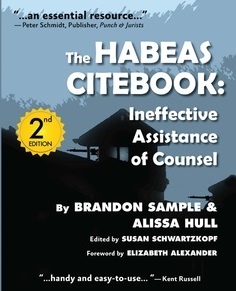SCOTUS Announces ‘Economic Loss’ Not Required to Violate Federal Wire Fraud Statute
In resolving a split among the United States Courts of Appeals, the Supreme Court of the United States held that a defendant who induces a victim to enter into a contract under false pretenses may be convicted of federal wire fraud under 18 U.S.C. § 1343 even though the defendant did not seek to cause the victim “economic loss.”
Background
Stamatios Kousisis and Alpha Painting and Construction Co. (“Alpha”), for which he served as a project manager, won two industrial painting contracts with the Pennsylvania Department of Transportation (“PennDOT”). A condition of both contracts was that the materials would be obtained from a “disadvantaged business,” i.e., “a for-profit small business” that is majority owned and controlled by “one or more individuals who are both socially and economically disadvantaged.” 49 CFR §§ 26.21, 26.39(c).
A large portion of the funding for both contracts was provided by the U.S. Department of Transportation (“DOT”). The DOT requires its grant recipients like the PennDOT to establish and implement a disadvantaged-business program, which is the reason it included the disadvantaged-business requirement in both contracts at issue.
Kousisis and Alpha failed to comply with the disadvantaged-business condition and provided several false certifications to conceal that fact. Kousisis stated that Markias, Inc., a prequalified disadvantaged business, would be the supplier for the projects in both successful bids submitted to the PennDOT. However, Markias, Inc. served as a mere “pass-through” entity between Kousisis and the actual suppliers of materials.
Under this scheme, the suppliers invoiced Markias, Inc. It in turn added a mark-up for its role in the scheme and submitted its final invoice to Kousisis, which he used to certify compliance with the disadvantaged-business requirement. He would then issue two checks—one to Markias, Inc. for its mark-up and the other to the actual supplier for the true cost of materials. This arrangement contradicted Kousisis’ representations made in the winning bids as well as violated the DOT’s rule that participating disadvantaged businesses must “perfor[m] a commercially useful function.” § 26.55(c).
The quality of the paint work met the contractual expectations, so the PennDOT made the required payments, resulting in a gross profit of more than $20 million for Alpha.
Procedural History
Once the deception was discovered, the Government charged Kousisis and Alpha with wire fraud under 18 U.S.C. § 1343, arguing that they had fraudulently induced the PennDOT to award the painting contracts to them. Under the fraudulent-inducement theory, a person commits federal fraud when he utilizes a material misstatement to deceive a victim into awarding him a contract that requires the victim to transfer money or property—“regardless of whether the fraudster, who often provides something in return, seeks to cause the victim net pecuniary loss,” the Court explained.
A jury found Kousisis and Alpha guilty of wire fraud and conspiracy. They moved for a judgment of acquittal based on the argument that the paintwork met the specifications in the contracts, so they did not scheme to defraud the PennDOT of “money or property” as required under the federal wire fraud statute. The U.S. District Court for the Eastern District of Pennsylvania rejected that argument as did the U.S. Court of Appeals for the Third Circuit. Both courts reasoned that obtaining money or property “was precisely the object” of the scheme, stating that they “set out to obtain millions of dollars that they would not have received but for their fraudulent misrepresentations.”
Notably, the circuits are divided on whether a defendant can be convicted of federal fraud when he did not seek to cause a “net pecuniary loss” to the victim. In affirming Kousisis’ conviction, the Third Circuit joined the Seventh, Eighth, and Tenth Circuits in holding that defendants can be convicted under these circumstances. In contrast, the Second, Sixth, Ninth, Eleventh, and D.C. Circuits hold otherwise. The U.S. Supreme Court granted certiorari to resolve the split among the circuits.
Analysis
The Court began its analysis by examining § 1343, which criminalizes the use of the wires to carry out a “scheme or artifice to defraud, or for obtaining money or property by means of false or fraudulent pretenses, representations, or promises.” Although the statute uses the disjunctive “or,” the Court explained that “we have declined to interpret § 1343 as establishing alternative pathways to a conviction.” See McNally v. United States, 483 U.S. 350 (1987). Instead, the Supreme Court reads the two clauses together so that a defendant is guilty of federal wire fraud only if he both “engaged in deception” and had “money or property” as “an object” of his fraud. Ciminelli v. United States, 598 U.S. 306 (2023).
The Court noted that the “lower courts” once interpreted “money or property” as a “catchall,” but it recently clarified that the federal fraud statutes cover only “traditional property interests.” Ciminelli. Accordingly, schemes that target the Government’s exercise of its regulatory power are not covered, see Kelly v. United States, 590 U.S. 391 (2020), nor are schemes that are designed to deprive another of “intangible interests unconnected to property, Ciminelli. Also, targeting the victim’s money or property must have been the “aim,” not an “incidental by product,” of the defendant’s fraud. Kelly.
After reviewing the governing law, the Court expressly rejected Kousisis’ argument that a federal fraud conviction requires “economic loss,” declaring that the “fraudulent-inducement theory is consistent with both the text of the wire fraud statute and our precedent interpreting it.” The crime of wire fraud requires that the defendant (1) devised or intended to devise a scheme (2) to obtain money or property (3) “by means of false or fraudulent pretenses, representations, or promises.” § 1343. The typical fraudulent-inducement scheme involves a defendant who (1) devises a scheme (2) that induces the victim to enter into a contract through which the defendant obtains the victim’s money or property (3) through the use of false or fraudulent pretenses. The Court pointed out that the “wire fraud statute is agnostic about economic loss” and that “a defendant violates” the statute “regardless of whether [the defendant] seeks to leave the victim economically worse off.” Thus, the Court concluded that the “prototypical fraudulent-inducement scheme plainly satisfies each” of the statutory elements of the wire-fraud statute and held that the fraudulent-induce theory applies to § 1343.
The Court applied the newly adopted fraudulent-inducement theory to the facts of the current case as follows: “By using Markias as a pass-through entity, petitioners ‘devised’ a ‘scheme’ to obtain contracts through feigned compliance with PennDOT’s disadvantaged-business requirement. Ibid. Their goal? To ‘obtai[n] money’ (tens of millions of dollars) from PennDOT. Ibid. And how? By making a number of ‘false or fraudulent … representations’—first about their plans to obtain paint supplies from Markias and later about having done exactly that. Ibid. Section 1343 requires nothing more.”
Conclusion
Accordingly, the Court affirmed the Third Circuit’s judgment affirming the convictions. See: Kousisis v. United States, 2025 U.S. LEXIS 1982 (2025).
As a digital subscriber to Criminal Legal News, you can access full text and downloads for this and other premium content.
Already a subscriber? Login
Related legal case
Kousisis v. United States
| Year | 2025 |
|---|---|
| Cite | 2025 U.S. LEXIS 1982 (2025) |
| Level | Supreme Court |




